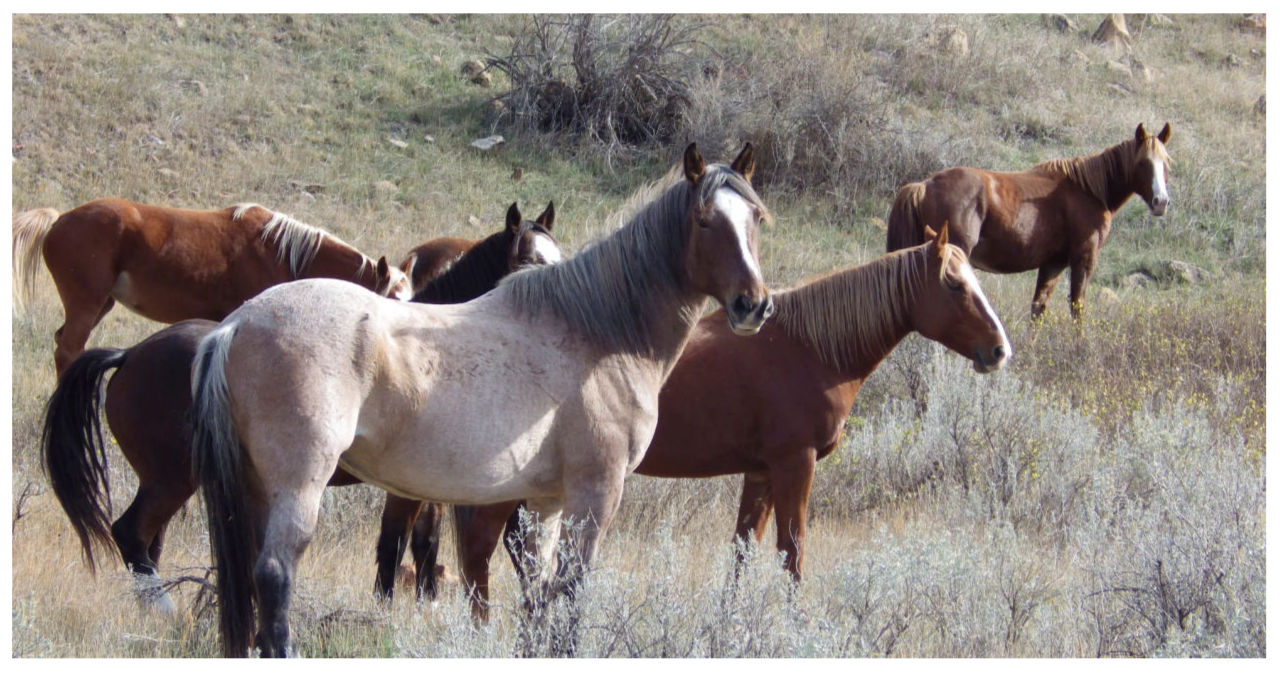Advocates for the approximately 200 wild horses that freely roam North Dakota’s Theodore Roosevelt National Park are seeking support from Congress to prevent the removal of these beloved animals from their natural habitat.
The National Park Service is expected to make a decision regarding the future of the horses in the Badlands National Park by April. This decision is part of an ongoing process to develop a park management plan for the so-called “livestock,” a term that horse advocates strongly disagree with.
In the annual Interior and Environment budget bill, which was passed by Congress and signed by President Joe Biden, Republican Senator John Hoeven has proposed a legislation that urges the Park Service to maintain the presence of the horses. This legislation also hints at the possibility of withholding any funding that is intended for their removal.
In an interview with The Associated Press, Hoeven expressed his optimism about continuing the dialogue with them and eventually reaching a favorable solution.
Advocates are concerned about the long-term preservation of the herd and wonder how many horses would be necessary to achieve this. They believe that a genetically viable herd should consist of at least 150 horses in order to avoid inbreeding problems. However, according to Park Superintendent Angie Richman, if the horses are allowed to remain in the park, they would still need to be reduced to a population of 35 to 60 animals as outlined in a 1978 environmental assessment.
Richman and the National Park Service chose not to respond to emails seeking comment on Hoeven’s legislation.
Park officials have previously stated that their assessment of whether the horses should remain aligns with their policies to remove non-native species that may pose a potential risk to resources. The park has suggested three options: swiftly removing the horses, gradually removing them, or taking no action.
Advocates have long been concerned about the planned removal of the horses, whose ancestors were unintentionally trapped within the park in the 1950s and have since been subjected to multiple roundups.
According to Castle McLaughlin, a former graduate student who conducted research on the horses while working for the Park Service in North Dakota during the 1980s, the horses in the park have diverse origins. These include Native American tribes, local ranches, and domestic stallions that were introduced to the park between the late 1970s and the 1990s.
“They truly represent a living history as they showcase the types of horses that were owned by the people of North Dakota, including both Native and non-Native individuals, for the past 150 years,” stated McLaughlin. She expressed her support for the state leaders’ dedication to preserving these horses, although she remains cautiously optimistic and skeptical about whether the Park Service will make the right decisions in this matter.
Visitors and photographers are often thrilled when they come across the horses along the park’s scenic road and hiking trails.
The decision process has received overwhelming public support for preserving the horses.
Chris Kman, the President of Chasing Horses Wild Horse Advocates, expressed her hope that the legislation will lead to the horses remaining in the park. However, she is still awaiting the park’s decision and is curious about how the legislation will affect the management plan for the horses.
“I doubt that any of us will have faith, even with the approval of Congress, that the park will act in the best interest of the genetically viable horse population,” she expressed. “Their persistent mindset has always been, ‘We cannot keep the horses, despite public demand. We hear their pleas, but our decision remains unchanged,’ regardless of the overwhelming support.”
In the previous year, Governor Doug Burgum extended an invitation for state cooperation in the care of the horses within the park. Richman expressed the park officials’ willingness to collaborate with the governor and the state to achieve a positive resolution.
All the horses can be found in the South Unit of the park, near Medora. The decision made by park officials will also impact approximately nine longhorn cattle in the North Unit of the park.



